Recent Articles
Popular Makes
Body Types
2020 Volvo XC90 Hybrid Road Test and Review
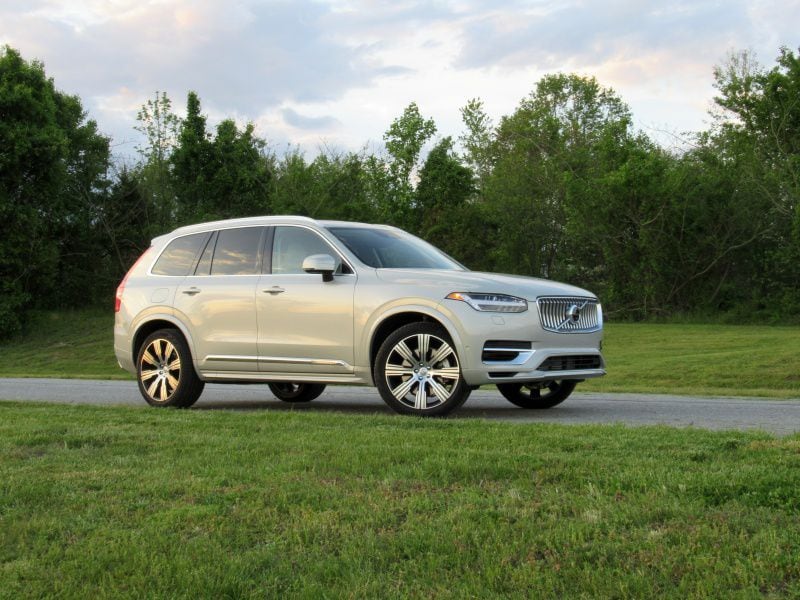
2020 Volvo XC90 T8 plug-in hybrid PHEV ・ Photo by Brady Holt
Buying an electric car can feel like a leap of faith. Will you be able to get around gas-free, or will you wind up stranded on the side of the road or need to constantly stop to slowly recharge your battery? Plus, if you want seven-passenger seating, your only pure-electric option is the $85,000 Tesla Model X.
Fortunately, there’s a middle ground: the plug-in hybrid. A good plug-in hybrid electric vehicle (PHEV) will let many drivers commute to work or run errands without burning any gasoline, yet also provide a gas engine for emergencies or road trips. One such PHEV is the 2020 Volvo XC90 T8, which the company updated this year with a higher-capacity battery and other upgrades. Like other XC90 models, the T8 is beautiful yet functional — with elegant styling, a magnificently appointed interior, and three adult-size rows of seats. But only this one lets you avoid using an ounce of gasoline under the right conditions. Prices start at $67,000 before tax incentives.
How It Works
The XC90 T8 shares its 2.0-liter four-cylinder engine with the vehicle’s mid-level T6 model. But using what Volvo calls “Twin Engine,” it also has two electric motors. What sets PHEVs like the XC90 T8 apart from ordinary hybrids is that you can recharge their batteries using electricity from the grid. The process takes about three hours on a 240-volt car charger or about seven hours on a 120-volt household outlet, meaning you can charge up easily at home overnight.
Then, once that range is used up, PHEVs operate like a regular hybrid: the electric battery gets recharged slightly while you drive, letting the electric motors provide some extra power and extra fuel economy whether you’ve plugged in or not. You can choose among several driving modes: Pure, which provides all-electric driving when you have enough battery and aren’t accelerating too hard; Hybrid, which balances speedy acceleration against minimizing fuel usage; and Power, which provides the full force of the engine and the electric motors for maximum acceleration.
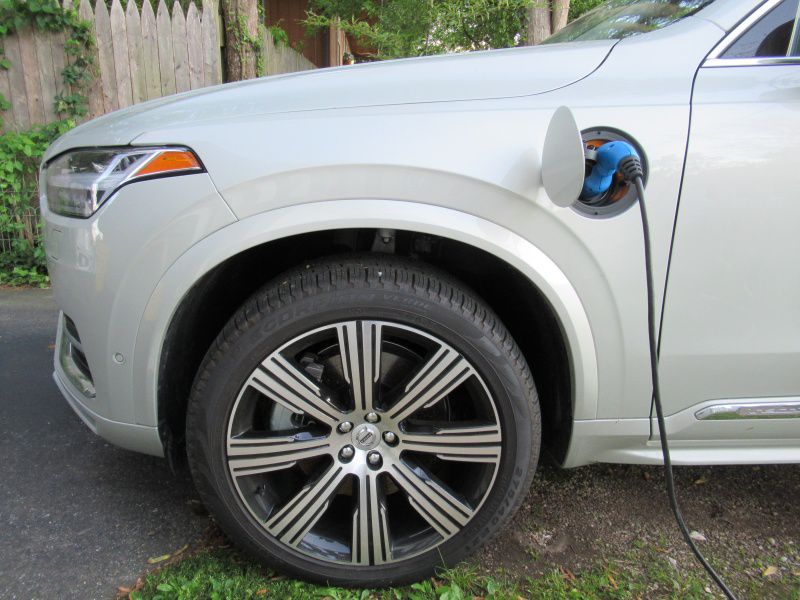
Photo by Brady Holt
Improved Range
For 2020, Volvo upgraded the XC90 T8’s electric battery from a 10.4-kWh capacity to 11.6 kWh. That increases its maximum EPA-estimated range per charge from 17 miles to 18 miles. Our test car did even better, averaging 19.8 miles per charge on the highway and 23.7 miles per charge in the lower-speed suburban conditions that are typically ideal for hybrids and electric vehicles.
However, there’s a caveat: Even if you have a full battery and select Pure mode, the gas engine may also switch on to provide additional power. It’s easy to inadvertently activate the gas engine just as you start accelerating from a stop, so keep an eye on the XC90’s gauges; they will show you how far you can press on the accelerator and stay in purely electric mode. Also, although the XC90 can travel up to 78 mph on solely electric power, we weren’t consistently able to cruise even at 70 mph — at times, we had to dip down into the low 60s to avoid the gasoline engine. Braking hard to avoid a deer also woke up the engine until we restarted the vehicle, frustrating when you’re trying to save fuel.
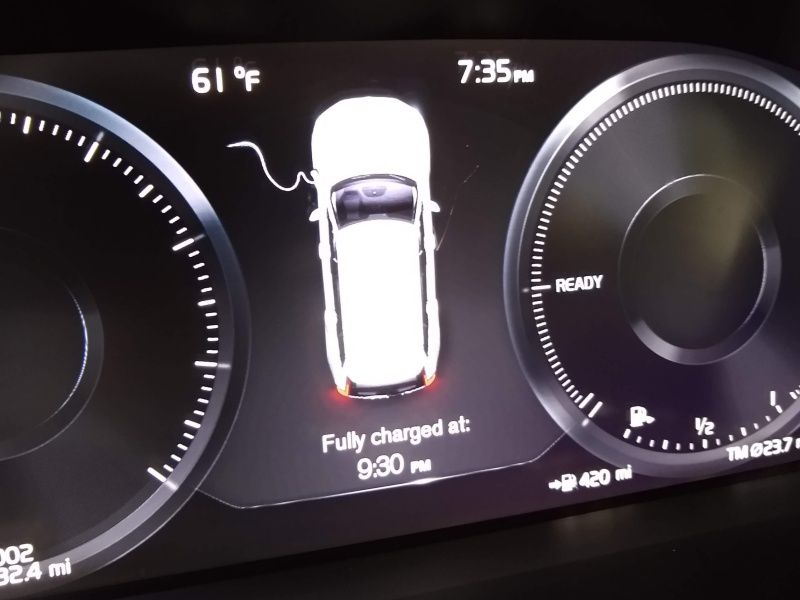
Photo by Brady Holt
Thrifty Yet Speedy
The base 2020 Volvo XC90 T5 has a turbocharged 2.0-liter four-cylinder engine that makes 250 horsepower and 258 lb-ft of torque. The mid-level T6 adds a supercharger to that engine to produce 315 horsepower and 295 lb-ft of torque. And the T8 hybrid adds two electric motors for a total of 400 horsepower and 472 lb-ft of torque, providing exceptionally quick acceleration.
But because it’s a plug-in hybrid, the XC90 T8 is also fuel-efficient. The EPA rates it at 55 miles per gallon equivalent, a measurement that factors in electricity and gasoline usage. Your efficiency will vary widely, though, by whether you take mostly short trips that rely primarily on electricity or longer ones that need more gasoline. The 2020 XC90 T8 scores an EPA-estimated 27 mpg in mixed driving on its gasoline engine, which is good for a seven-seat luxury SUV and up from last year’s 25 mpg. But that’s not the amazing fuel savings that PHEV buyers have signed up for. Our test vehicle fell slightly below EPA estimates, managing 25.5 mpg during the miles we needed the gasoline engine. But factoring the miles we traveled on electricity, we averaged 59.1 mpg.
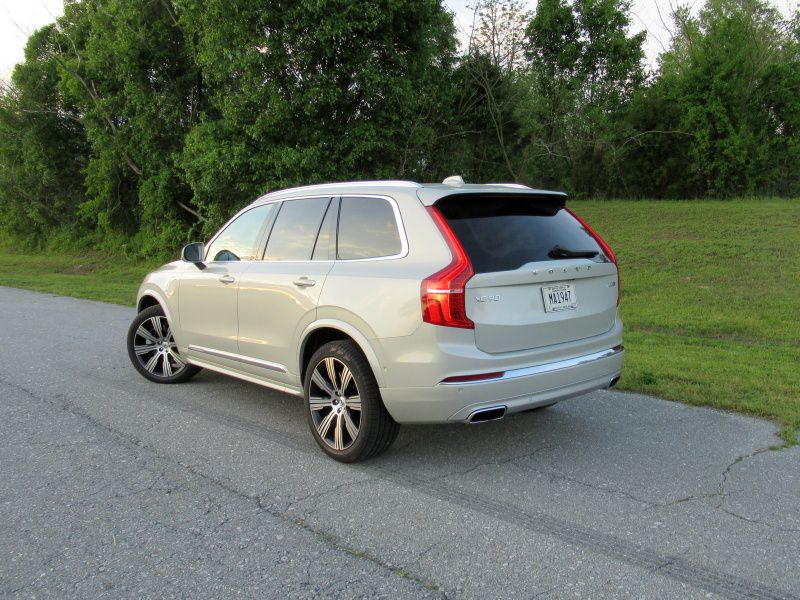
Photo by Brady Holt
Beautiful Design
The Volvo XC90 has changed little since its debut as a 2016 model, but it still looks modern, fresh, and beautiful. It’s classy without being ostentatious — never overly flashy but never dull. The 2020 model year brought some design tweaks, including a more striking concave grille and revised bumpers, but you won’t likely notice the changes. Mostly, you’ll see the XC90’s slim “Thor’s hammer” headlights, its taillamps that stretch vertically alongside the generously sized rear windshield, and the proudly boxy shape that doesn’t pretend this SUV is a sports car.
Things are even better inside, where the XC90 is drop-dead gorgeous, especially in our tested top-of-the-line T8 Inscription test vehicle. The dashboard is centered around a 9.3-inch touchscreen, which is no longer as dazzlingly huge as it seemed back in 2016, but which still brings a modern high-tech vibe. Yet nothing is stark, either, thanks to elegant curves and rich materials. Volvo has sped up the infotainment system’s responses since 2016, but a few functions remain buried too deep into menus. A couple of nitpicks include a sliding cover for the front cupholders that looks great but moves clunkily, and front cupholders that are inconveniently small and shallow.
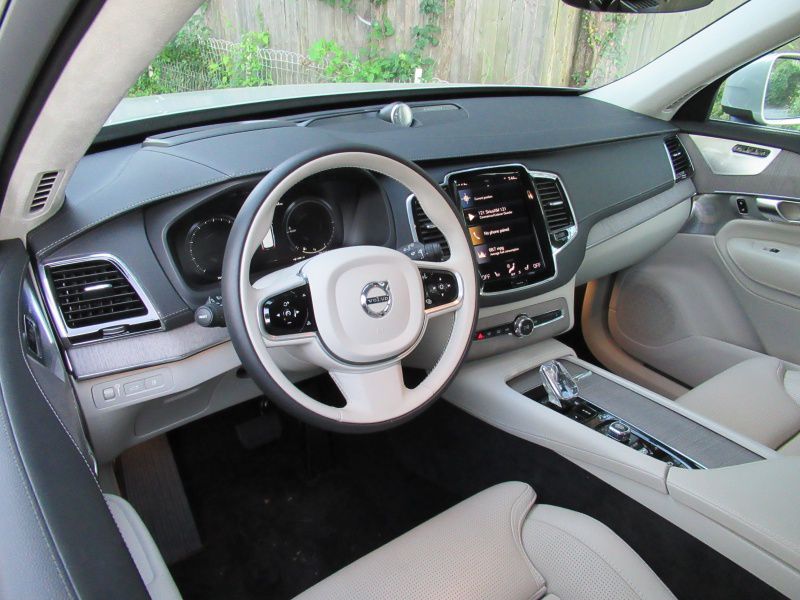
Photo by Brady Holt
Spacious Interior
Many luxury SUVs look great but offer surprisingly little interior space for their size. That’s not the case with the 2020 Volvo XC90, which delivers a roomier cabin for passengers and cargo even than some mainstream-brand vehicles. Volvo has increased its style and luxury of late, but it hasn’t forgotten how to build a fantastic family car.
There are comfortable, well-padded seats in all three rows, and even adults can squeeze into the far back. A new option provides six-passenger seating with second-row captain’s chairs in place of the standard bench seat. One issue: There are only two USB ports, which may annoy rear passengers. Cargo space measures an impressive 15.8 cubic feet behind the third-row seat, 41.8 cubic feet behind the second row, and 85.7 cubic feet with both rear rows folded down.
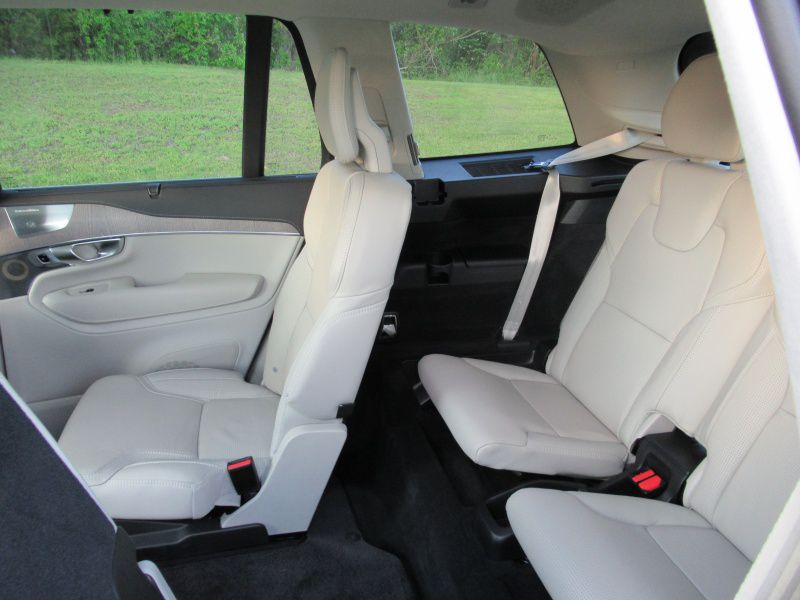
Photo by Brady Holt
Standout Safety
The XC90 earned top scores in crash testing from the Insurance Institute for Highway Safety and National Highway Traffic Safety Administration, in keeping with Volvo’s reputation for safety. What’s more, nearly every piece of safety technology available on the 2020 Volvo XC90 is included as standard equipment. That’s not something you can take for granted even in a luxury car.
These standard features include a forward collision warning with automatic emergency braking, which can detect cars, pedestrians, bicyclists, and large animals; lane-keeping steering assistance; road sign information; and rear parking sensors. The only extra-cost safety features are full LED headlights that point around curves when you turn the steering wheel, a head-up display, automatic headlight cleaners, and a surround-view parking camera. They’re part of the $2,450 Advanced Package.
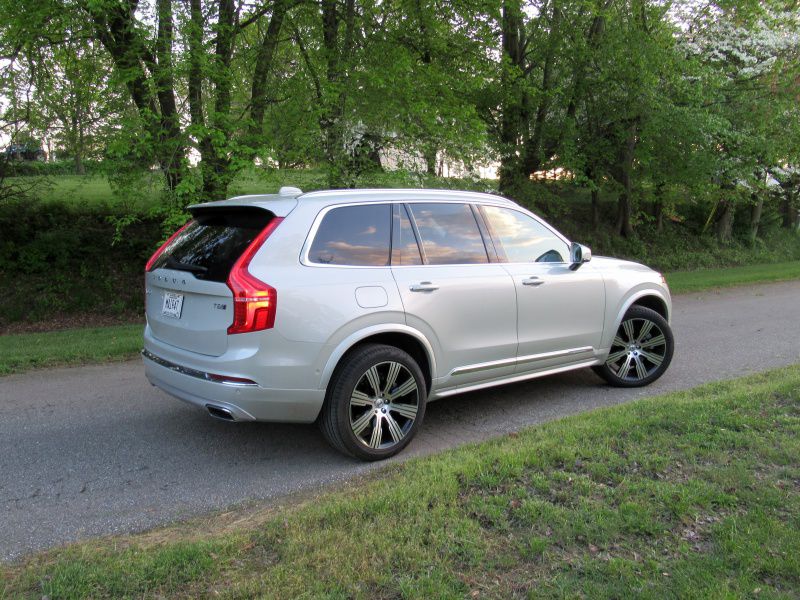
Photo by Brady Holt
Not Inexpensive
The 2020 Volvo XC90 is sold in a choice of three engines (designated as T5, T6, and — for all hybrids — T8) and three trim levels: the base Momentum, the sport-themed R-Design, and the extra-luxe Inscription. Prices start at $48,350 for the T5, $56,300 for the T6, and $67,000 for the T8 hybrid. A federal tax credit of $5,419 blunts the cost of the plug-in hybrid, and this year’s larger battery capacity also bumped up the tax credit by more than $400. Every Volvo XC90 hybrid, even the base Momentum, includes high-end features like genuine leather seats, rain-sensing windshield wipers, a navigation system, a 10-speaker sound system, big 19-inch wheels, and a hands-free power liftgate.
The flashier-looking T8 R-Design starts at $72,700, while the T8 Inscription like our test vehicle starts at $73,300. It brings upgraded interior materials like Nappa leather upholstery and fancier wood trim, along with an upgraded Harman Kardon stereo and ventilated front seats. With the Advanced Package and other options, including a $3,200 Bowers & Wilkinson sound system, our test vehicle hit $86,990. Thank goodness for the tax credit.
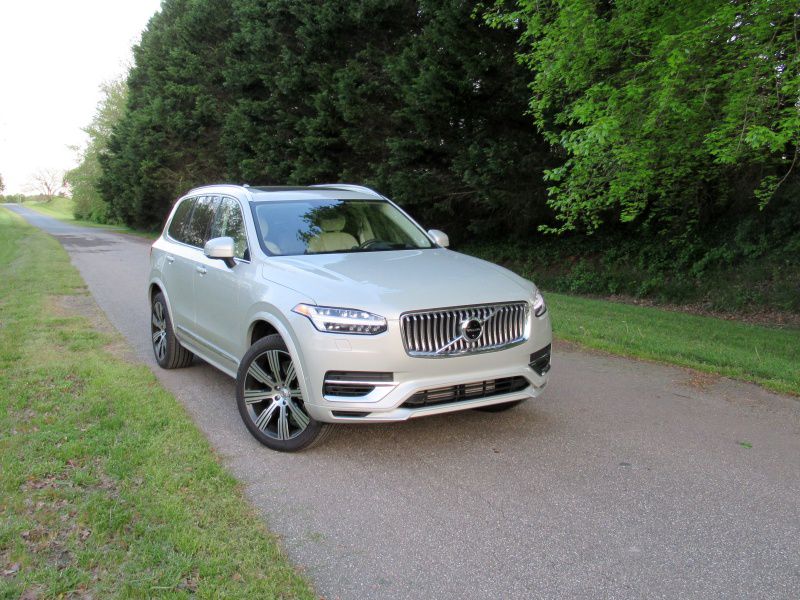
Photo by Brady Holt
Competitors to Consider
The 2020 Volvo XC90 T8 has two key competitors on the way in the near future: plug-in hybrid versions of the BMW X5 and Mercedes-Benz GLE, which are expected to offer substantially more all-electric range than the Volvo. But they’re not on sale yet, and neither is as roomy as the XC90. Another family-friendly PHEV is the Chrysler Pacifica Hybrid minivan, which is more upscale than you might expect and which manages 32 miles per charge, but which doesn’t offer all-wheel-drive — and, of course, isn’t a luxury SUV like the XC90.
Buyers looking to reduce their luxury SUVs’ carbon footprints can also choose gas-electric versions of the Lexus RX and Acura MDX. These hybrids are much less expensive than the XC90 T8, even after its federal tax credit, but they don’t offer plug-in capabilities. They’re also not as fancy-feeling as the XC90, and the RX doesn’t have as much room. Lastly, if you don’t need seven-passenger seating, Volvo offers the XC90 T8’s powertrain in the smaller, less expensive, and similarly styled XC60.
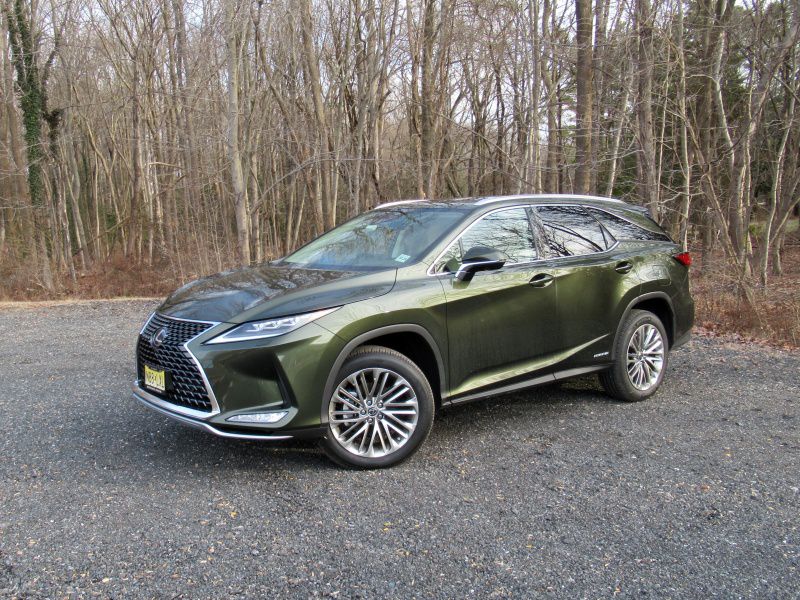
Photo by Brady Holt
Final Thoughts
The 2020 Volvo XC90 is a luxury SUV that’s family-friendly without being exclusively family-focused. And the T8 plug-in hybrid version adds the potential to get around gas-free on short trips.
The XC90 T8 isn’t the most affordable vehicle you can buy, but its combination of spacious practicality, elegant styling, high-end features, and eco-friendly driving is hard to match.
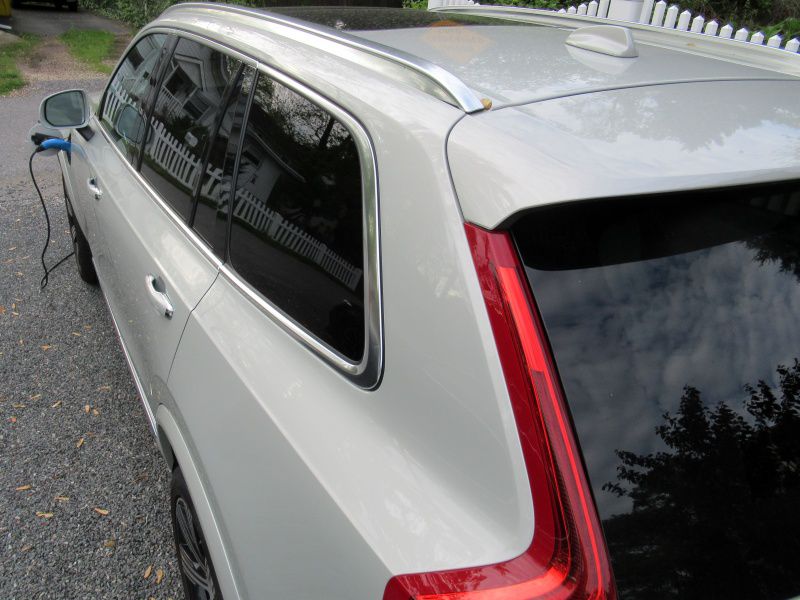
Photo by Brady Holt